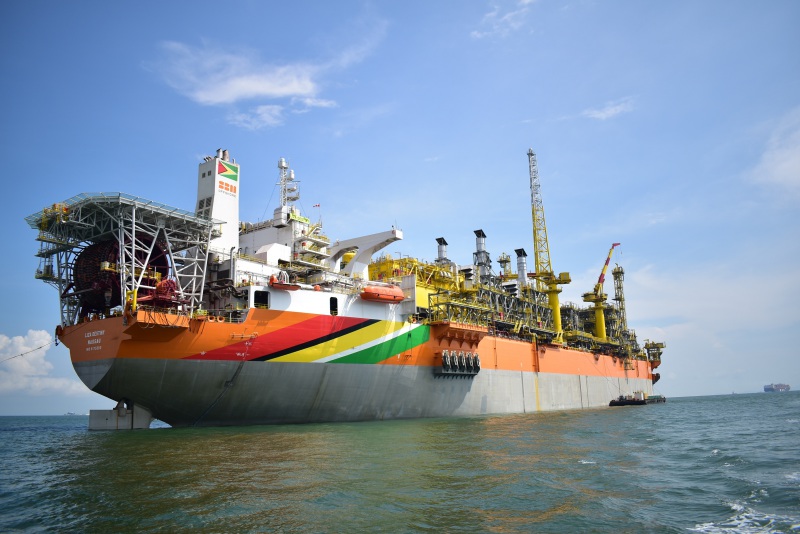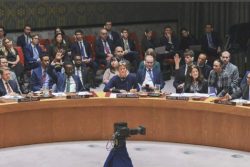Government seems afraid to question ExxonMobil about the huge disparity in costs between the Stabroek Block’s Liza-1 and Liza-2 projects but this issue needs to be urgently addressed lest this country loses out again on needed revenue, says former Petroleum Advisor Jan Mangal and economist Darshanand Khusial.
“Before we proceed with any more approvals, we should clarify mathematical anomalies between Liza Phase-1 and Liza Phase-2 that may save us billions of US dollars; verify the pre-contract costs; hire qualified people and create the institutions/regulations so we can secure our oil wealth; and rebalance the Stabroek Block contract so Guyana gets its fair share,” Khusial said in a letter to yesterday’s Sunday Stabroek.
“The Liza Phase-2 project should not have been approved without corrections, but sadly it was. Now we need to make sure we use the approval of the Payara project as leverage to get a fair deal for Guyana,” he added.
His posture is echoed by Mangal who also adds that the approval of the Liza-2 project should have been used “as leverage to get a fair deal” but he believes that “the government was incompetent and afraid” and the situation is being repeated.
“Now we have the same issue with approval of the third project Payara. This third project also has additional issues to which the Guyanese people need to pay careful attention,” he said, while positing much of what Khusial stated.
Mangal adds that the focus also has to be shifted on how much oil is too much oil with respect to rising sea levels and climate change. “My view is there is no need for Payara and more projects due to the severe climate issues we face,” he said.
Khusial, who is a representative of the Oil and Gas Governance Network (OGGN), pointed to the fact that ExxonMobil and partners in the Stabroek Block, CNOOC and Hess, in December, 2018, had reduced the gross capital cost of Liza Phase-1 by US$700 million to US$3.7 billion from the US$4.4B it had budgeted.
“Recall, Liza Phase-1 holds 450 million barrels of oil. The gross capital cost of Liza Phase-2, (it holds 600 million barrels of oil), has been stated as US$6 billion. But doing some simple divisions to arrive at gross capital cost per barrel reveals a quirk between Liza Phase- 1 and Liza Phase-2,” he said. The reduction had come after numerous questions were raised in public by Mangal and others.
Pointing to a table he worked out, Khusial said that the gross capital cost per barrel of Liza Phase-2 is almost US$2 higher than that of Liza Phase-1.
“Due to lessons learned from Phase 1 and economies of scale, one would expect that Liza Phase-2 gross capital cost per barrel should be less than that of Liza Phase-1. That difference of just a few dollars spread over 600 million barrels results in an extra cost of over one billion US dollars for Liza Phase-2. That is close to the amount of money the Government of Guyana needs to run the country per year,” he reasoned.
“Additionally, there appears to be an even bigger anomaly that the oil companies should explain. Hess, in recent presentations, has listed the break-even cost for Liza Phase-1 at US$35/barrel. But Liza Phase-2 is a better deal with a break-even cost of US$25/barrel. Intuitively, one would think: If the break-even cost is about 30% less for Liza Phase-2 compared to Liza Phase 1 then the gross capital cost per barrel should be significantly less than $8.22 per barrel for Liza Phase-2,” he added.
‘Cost structure’
In 2018, Hess’ Senior Vice President and Chief Financial Officer at Hess, John Rielly, announced to an investor forum in Houston Texas, the reduced figure.
Giving a breakdown of the reduction in costs, Richard Lynch, who is a Senior Vice President of Technology and Services, explained: “I’ll just point out, there are 17 development wells to be drilled in Liza Phase-1. At sanction, each one of those wells were estimated a cost of US$85 million per well. Well, we kind of got in, started our drilling machine up, and understood our cost structures; we actually reduce[d] those costs down from US$85 million to US$67 million for wells…”
As a result, Lisa Phase-2’s estimate now stands at US$58 million per well, where out of 30 to be drilled, 15 will be producers, nine will be water injectors and six, gas injectors.
The company’s executives compared works in Guyana to that of other operations in the Deepwater Gulf of Mexico and the Permian, saying that operations here find exceptional reservoir quality with low development costs and works out to drilling and time costs cut in half.
“Because of this exceptional well quality, it only takes you eight producers to hold and maintain that 120,000 per day [production], whereas in the Delaware, you need over 1,500 wells to get to that same level….each well in Guyana will produce about 63 million barrels each, so they are really big wells versus 1 million each in the Permian. I’m not going to argue that the Permian is not a good investment, but Guyana offers lower costs,” he said.
A study conducted by Calgary-based RS Energy Group, analysing the top 50 offshore developments and shale, stated that Guyana’s Liza has the lowest breakeven cost. “RS Energy recently ranked the 50 top offshore developments and play and… ranked the Liza development as the lowest breakeven lowest of global offshore developments …keep in mind what Exxon -said—this is come of the best carbonate they have seen,” Lynch said.
The Production Sharing Agreement (PSA) between Guyana and ExxonMobil’s affiliate, Esso Exploration and Production Guyana Limited, and partners CNOOC NEXEN Petroleum Guyana Limited and Hess Guyana, states that up to 75% of the revenue earned from production could be used to recover the companies’ investment. This was estimated at US$5 billion by the year 2020, when production was estimated to begin at the Liza-1 well. The remaining 25% —profit oil — is to be split evenly between Guyana and ExxonMobil.
Exxon has already racked up over US$900 million in recovery costs as of 2017, of which some US$460 million is attributed to pre-contract costs.
‘Fooled’
Khusial said that if there is one lesson this country should learn from the debacle with the oil contracts, it is that “we should take our time to carefully vet future approvals”.
“It is coming up to a year since exposures in the independent press caused the Liza Phase-1 gross capital cost to be reduced by US$700 million. Before we rush to approve Payara and other projects, we should have the oil companies explain the anomalies between Liza Phase-1 and Liza Phase-2. If the Liza 1 and Liza 2 sites are close to each other and Liza 2 is bigger than Liza 1, wouldn’t you expect the gross capital cost of Liza Phase-2 to be less on a relative basis?” he asks.
“Rushing approvals and lack of high-quality analyses have resulted in US billion-dollar benefits to the oil companies and to equivalent losses for the Guyanese people,” he added.
For Mangal, government needs to undertake the necessary analysis to determine the cost benefit calculation to figure out how much oil Guyana needs, in relation to the trade-offs and negative impacts on the poor people. “It is the rich who want the oil money and who will get it, and the poor will not benefit from oil but will instead be impacted severely by sea level rise. Guyanese are being fooled that more oil means more wealth for the people. Guyana can be extremely prosperous with only the first one or two projects, but this requires competent government who can get a fair deal and also who will not steal the oil money,” he posits.
He said that probing questions on risk assessment and analysis on environment and other factors should have been raised at the recently concluded GIPEX Conference. “Were these types of very important questions and debates not being asked and had at the recent GIPEX conference? If not, what was the purpose of the conference if not to debate the important issues and decisions before the people of Guyana?” he questioned.










